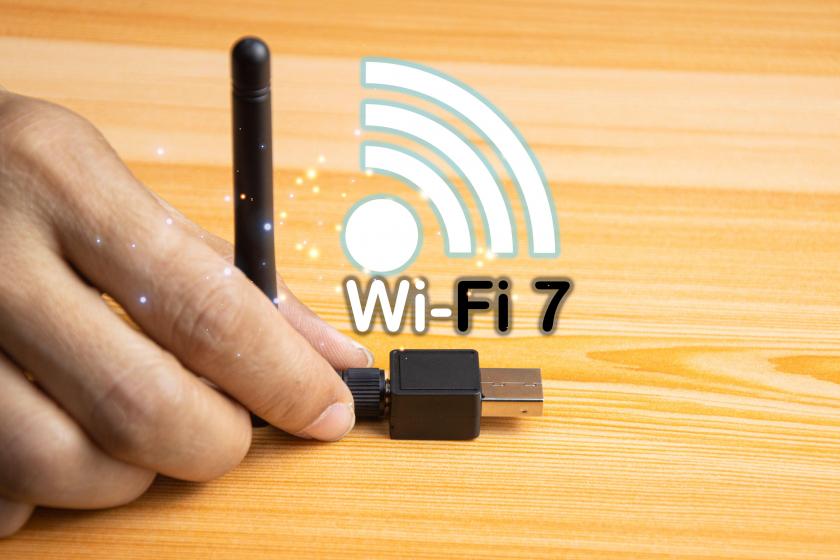

- Details
- Published on 30 January 2024
(Credit: tanit boonruen / Alamy Stock Photo)
Performance improvements make Wi-Fi 7 ideal for streaming applications and for reducing congestion in crowded environments.
This week marked a milestone in the evolution of Wi-Fi 7 with the introduction of W-Fi Certified 7, a program from the Wi-Fi Alliance to drive interoperability of products that employ the standard.
Wi-Fi Certified 7 will facilitate worldwide interoperability and bring advanced Wi-Fi performance to the next era of connected devices. It is based on IEEE 802.11be technology and will be available before the end of Q1 2024, according to the alliance.
Building on Wi-Fi 7 progress last year
Last year saw chip, module, and device vendors, including Qualcomm, Broadcom, Intel, MediaTek, and CommScope, roll out products. Now, the Wi-Fi Alliance is forecasting more than 233 million Wi-Fi 7 devices to enter the market in 2024, growing to 2.1 billion devices by 2028.
One analyst called 2023 an exciting year for the overall Wireless LAN Market. “We saw record high revenues, growth of Wi-Fi traffic in the new 6 GHz band, and like a cherry on the sundae...the very first Wi-Fi 7 APs [access points] for enterprises,” explained Siân Morgan, Research Director at Dell’Oro, a global technology market research and analysis firm. “There are some new trends shaping up for 2024, and Wi-Fi 7 will be an important vector of growth.” The future looks bright. Dell’Oro predicts enterprise-class Wi-Fi 7 revenues will exceed $5 billion in 2027.
Wi-Fi 7 differentiators for the enterprise
The Wi-Fi Alliance claims Wi-Fi 7 devices already on the market support a range of new features such as higher throughput, deterministic latency, and greater reliability for critical traffic.
Performance improvements make Wi-Fi 7 ideal for streaming applications and for reducing congestion in crowded environments. As we reported in September, more users can run more bandwidth-intensive and latency-dependent applications without incurring performance problems. An enterprise can support more users with fewer APs, which translates into lower management costs.
To date, the earliest users of the previously fastest Wi-Fi version, 6E, have been owners of stadiums and indoor venues where professional sports and concerts (large, tightly packed audiences) are king.
There is some good news for users of older Wi-Fi versions on the compatibility front.
"Wi-Fi 7 certified devices and APs will be compatible with older Wi-Fi versions," confirmed Morgan. "However, only users in the countries that have attributed the 6 GHz band for unlicensed use, such as in North America, most of South America, and Europe, will be able to access the new frequency. In other countries, Wi-Fi 7 will operate in the legacy bands: 2.4 GHz and 5 GHz".
Potential Wi-Fi 7 use cases
The alliance expects the new capabilities to support new use cases, including multi-user AR/VR/XR, immersive 3-D training, electronic gaming, hybrid work, industrial IoT, and automotive.
The Wi-Fi 7 feature menu
The Wi-Fi Alliance listed the following advanced features of version 7:
- Multi-link operation (MLO), which enables devices to transmit and receive data simultaneously over multiple links. This increases throughput, reduces latency, and improves reliability.
- 4K QAM, which achieves 20% faster transmission rates than 1024 QAM.
- 512 Compressed block-ack, which improves efficiency while reducing overhead.
- 320 MHz channels, which are available in those countries where the 6 GHz band is available for Wi-Fi. The ultra-wide channels double the widest channel size to facilitate multigigabit device speeds and high throughput.
- Multiple RUs to a single STA, which is designed to improve flexibility for spectrum resource scheduling to enhance spectrum efficiency.
- Triggered uplink access, which is designed to optimize Wi-Fi 6, defined triggered uplink access to accommodate latency-sensitive streams and satisfy QoS requirements.
- Emergency Preparedness Communication Services (EPCS), which is designed to provide seamless National Security & Emergency Preparedness (NSEP) service for users while also maintaining the priority and quality of service in Wi-Fi access networks.
Summarizing the capabilities, features, and potential of the technology, Kevin Robinson, Wi-Fi Alliance president and CEO, said (in a prepared statement): “The introduction of Wi-Fi Certified 7 marks the emergence of the latest generation in the evolution of wireless connectivity. This certification underscores our commitment to delivering cutting-edge technology that redefines the way users experience Wi-Fi, providing faster speeds, improved efficiency, and increased reliability, which expand the horizons of what is possible through Wi-Fi."
Related articles:

